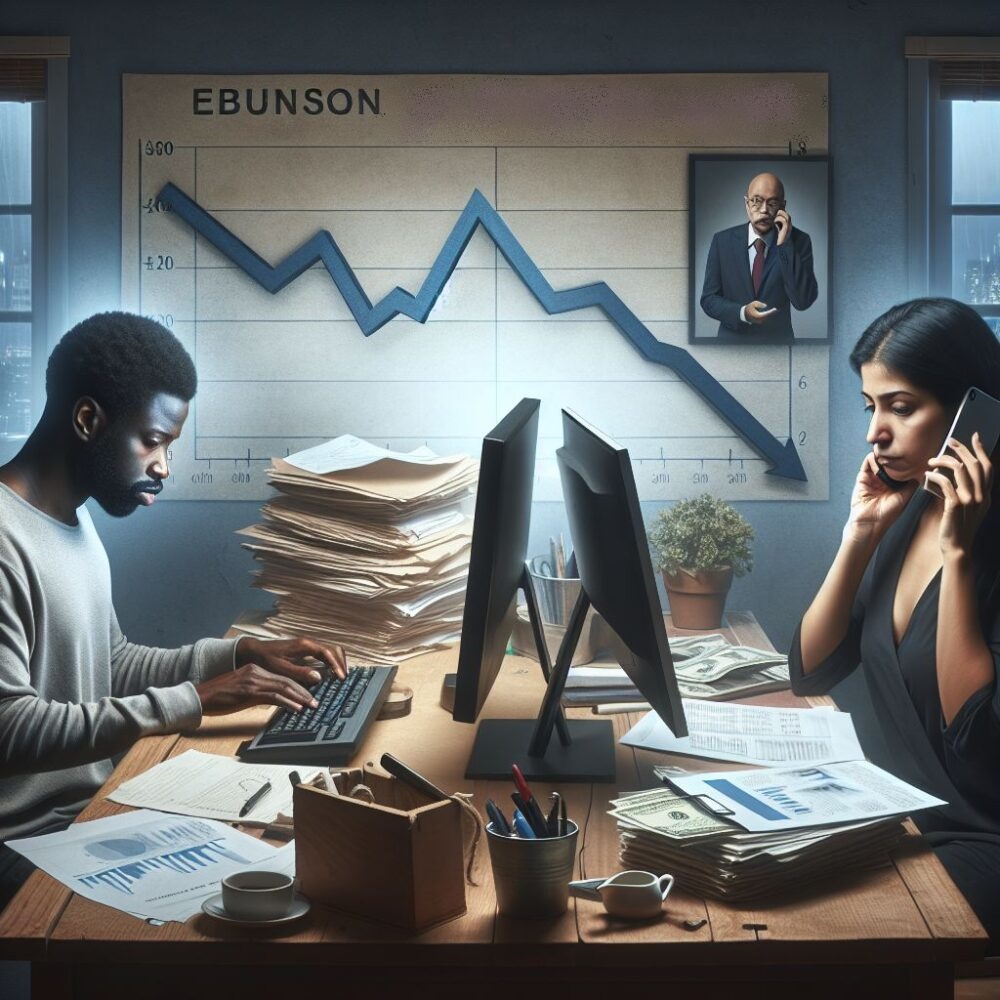Embrace the digital revolution and turn your creativity into cash! In this guide, we’ll explore the exciting world of selling digital art online. Whether you’re a seasoned digital artist or just starting out, discover effective strategies to monetize your talent and thrive in the dynamic online art market. Unleash your potential, reach a global audience, and transform your passion into profit effortlessly.
Key Takeways
-
Explore the profitable world of selling digital art online.
-
Learn about various platforms to showcase and sell your digital creations.
-
Discover how to identify your target audience and effectively market your art.
-
Understand the different types of digital art products you can offer.
-
Get insights on protecting your artwork and staying inspired in the digital age.
Your Digital Canvas Awaits: Tap Into the Online Art Market
Imagine a world where your art reaches every corner of the globe without shipping a single canvas. That’s the beauty of the digital art market—a place where pixels meet passion, and creativity knows no bounds. As we dive into this realm, remember, your art is not just a product; it’s a part of you that you’re sharing with the world.
Discover the Digital Renaissance
The digital art scene is booming, and it’s not just about the art itself—it’s about the connections you make and the stories you tell. It’s a digital renaissance, and you’re the artist equipped to take on this new world. So grab your digital brush, and let’s paint the path to your online art empire.
Monetizing Your Masterpieces
Let’s be real—passion fuels our art, but we also need to make a living. Monetizing your art online is more than possible; it’s a thriving ecosystem waiting for your unique voice. Whether you’re creating mesmerizing animations or stunning digital paintings, there’s a place for you to turn those digital files into real-world income.
The Virtual Gallery: Where to Exhibit Your Work
Choosing where to display your art is like picking the perfect frame for your masterpiece. From dedicated art platforms to general marketplaces, the digital world is filled with virtual galleries eager to showcase your work. But it’s not just about posting your art; it’s about telling a story that captivates your audience and leaves them wanting more.
Crafting Your Digital Art Portfolio
Your portfolio is your digital handshake, the first impression that can open doors to new opportunities. It’s crucial to curate a collection that not only showcases your skills but also resonates with your audience. Think of it as your curated art exhibit—one that’s accessible with just a click.
Choosing The Right Tools and Software
The brush you choose can change the stroke, the software you select can transform your art. From Adobe Photoshop to Procreate, each tool offers unique features that can enhance your digital canvas. Choose wisely, as these tools become an extension of your artistic hand.
-
Adobe Photoshop: A powerhouse for detailed work and complex compositions.
-
Procreate: A user-friendly app for artists on-the-go with an iPad.
-
Clip Studio Paint: Ideal for illustrators and comic artists with its intuitive drawing experience.
-
Corel Painter: A favorite for those who want to mimic traditional painting techniques.
But remember, it’s not the tool that makes the artist—it’s how you use it to bring your vision to life.
Developing a Cohesive Collection
Your collection tells a story, and each piece is a chapter. Aim for cohesion, not just in style but in the emotion your art evokes. This doesn’t mean you can’t explore different themes or techniques; it means there should be a recognizable thread that ties your work together.
Understanding the Different Types of Digital Art Products
Digital Downloads: Crafting Art in Pixels
Digital downloads are the bread and butter of the online art market. They’re versatile, cost-effective, and instantly accessible. Offer your audience everything from desktop wallpapers to printable art, and watch as your creations adorn screens and walls across the globe.
Physical Prints: Art You Can Touch
-
High-quality prints that turn digital into tangible.
-
Limited edition runs to create a sense of exclusivity.
-
Canvas prints for a classic feel.
Physical prints bridge the gap between the digital and the physical world, allowing your audience to own a piece of your digital prowess in a form they can touch and feel.
For example, selling limited edition prints of your digital artwork can create a sense of urgency and exclusivity, encouraging collectors to act fast.
NFTs: The New Frontier of Art Ownership
Non-fungible tokens (NFTs) are revolutionizing how we think about art ownership and authenticity in the digital space. They’re unique, blockchain-based assets that represent your art, making it collectible and, in some cases, more valuable. If you’re ready to explore this cutting-edge market, NFTs could be your ticket to a new level of artistic recognition.
Identifying Your Audience
Before you can sell your art, you need to know who you’re selling to. Your audience isn’t just anyone with a wallet—it’s the group of people who connect with your work on a deeper level. They’re the ones who will champion your art, share it with friends, and eagerly await your next piece.
Finding Your Niche in the Digital Art World
Finding your niche is like discovering your artistic home. It’s the theme, style, or subject that you’re passionate about and that others are drawn to. Maybe it’s ethereal landscapes, cyberpunk cityscapes, or whimsical character designs—whatever it is, embrace it fully.
-
Consider what themes or subjects you’re most passionate about.
-
Look at what’s trending but also think about what’s timeless.
-
Research what other artists in your niche are doing and how you can differentiate yourself.
Once you’ve found your niche, you’ll find your tribe—the people who are as excited about your art as you are.
Building an Engaged Community
Building a community is like planting a garden. It takes time, care, and the right environment to flourish. Engage with your followers, listen to their feedback, and involve them in your creative process. It’s not just about gaining fans; it’s about growing relationships.
Marketing Strategies for Digital Artists
Marketing your digital art is essential. It’s not enough to create; you must also share your work with the world. A well-thought-out marketing strategy can mean the difference between a masterpiece that’s seen by a few and one that’s admired by many.
Leveraging Social Media to Showcase Your Art
Social media is your digital gallery, open 24/7 to a global audience. Platforms like Instagram, Twitter, and Pinterest are visual-centric and can be powerful tools to get your art in front of the right eyes. Share your process, your final pieces, and the story behind them.
-
Post consistently but prioritize quality over quantity.
-
Use hashtags strategically to reach a broader audience.
-
Engage with your followers and participate in the art community.
Remember, social media is about being social—so don’t just broadcast, build connections.
Email Campaigns: Keeping Collectors in the Loop
Email is a direct line to your most dedicated fans. Use it to announce new releases, share exclusive sneak peeks, or offer special discounts. It’s a personal touch that can turn a casual admirer into a loyal collector.
SEO for Artists: Ranking in a Digital Ecosystem
Search Engine Optimization (SEO) might seem daunting, but it’s just about making your online portfolio easy to find. Use keywords related to your art, write clear descriptions, and ensure your website is user-friendly. Good SEO practices can help art enthusiasts discover you, even when they’re not directly searching for your name.
Maximizing Sales and Profits
Selling your art is rewarding, but maximizing your sales and profits ensures you can keep doing what you love. Diversify your offerings, understand your market, and don’t be afraid to experiment with new revenue streams.
Setting the Right Prices for Your Art
Pricing your art can be tricky—it’s a balance between valuing your time and skill and what the market will bear. Research is key. Look at what similar artists charge and consider your own experience and the uniqueness of your work.
-
Factor in your time, materials, and overhead costs.
-
Don’t undervalue your work; your price should reflect your art’s worth.
-
Be transparent with your pricing to build trust with your buyers.
Most importantly, be willing to adjust your prices as you grow and gain more recognition.
Creating Multiple Revenue Streams
Don’t put all your eggs in one basket. Explore different ways to monetize your art. Offer commissions, teach courses, create tutorials, or sell merchandise. Multiple revenue streams can help stabilize your income and allow you to reach different segments of your audience.
Protecting Your Art Online
Your digital art is precious, and protecting it online should be a top priority. Understand the basics of copyright and licensing, and be proactive in safeguarding your work from unauthorized use.
Understanding Copyright and Licensing
Copyright laws give you, the creator, exclusive rights to your artwork. Licensing allows others to use your art under specific conditions. Know these rights well, and use contracts to clarify terms whenever you license your work.
Dealing with Art Theft and Plagiarism
Art theft and plagiarism can be heartbreaking, but there are steps you can take to protect yourself. Watermark your images, use low-resolution files for online display, and monitor the internet for unauthorized uses of your work. If you find your art being used without permission, don’t hesitate to take action.
Staying at the forefront of digital art trends is not just about keeping your work fresh; it’s about staying relevant in a fast-paced market. This means being observant, adaptable, and always ready to embrace new techniques and ideas.
Keeping Up with Digital Art Trends
As a digital artist, you’re part of a dynamic, ever-evolving community. Trends come and go, and what’s popular today might be forgotten tomorrow. To stay ahead, you need to keep your finger on the pulse of the digital art world. This could mean exploring new styles, incorporating emerging technologies, or even starting trends of your own.
For example, augmented reality (AR) and virtual reality (VR) are gaining traction in the art world. Artists are creating immersive experiences that allow viewers to step into their artwork, offering a new dimension to digital art.
Remember, following trends doesn’t mean losing your unique voice. It’s about finding ways to integrate new ideas into your work in a way that enhances your style and resonates with your audience.
Continuously Learning and Improving Your Skills
Art is a journey, not a destination. As you evolve as an artist, so should your skills. Investing time in learning new software, experimenting with different techniques, or even going back to the basics can breathe new life into your work. The digital art landscape is constantly changing, and to thrive, you must change with it.
Online courses, tutorials, and forums can be invaluable resources. Engage with other artists, share your knowledge, and be open to feedback. Every piece of art you create is a learning experience—one that builds your skills and shapes your artistic identity.
-
Take online courses to master new tools and techniques.
-
Participate in art challenges to push your creative boundaries.
-
Join online art communities to exchange knowledge and get inspired.
Continuous learning is the fuel that will keep your creative fire burning brightly.
Frequently Asked Questions (FAQ)
How do I get started with selling digital art online?
Getting started with selling digital art online is a blend of creativity and strategy. Begin by creating a diverse portfolio that showcases your best work. Next, choose the right online platforms that align with your art style and target audience. From there, set up your digital storefront, whether it’s on a marketplace or your own website. Lastly, market your art effectively using social media, email campaigns, and SEO techniques to reach potential buyers.
What platforms are best for selling digital art?
The best platforms for selling digital art often depend on your specific niche and audience. However, popular choices include Etsy for a wide range of art styles, Society6 for print-on-demand products, and ArtStation for concept art and digital paintings. For those interested in selling NFTs, platforms like OpenSea and Rarible are at the forefront.
It’s important to research each platform’s audience, fees, and features to find the best fit for your digital art business.
How can I protect my digital art from theft?
Protecting your digital art from theft involves several proactive steps. Watermarking your images can deter thieves and make it easier to prove ownership. Use low-resolution files for online displays to prevent high-quality reproductions. Additionally, regularly search for your art online to ensure it’s not being used without permission. If you do find unauthorized use, take action by contacting the offender or seeking legal advice.
Can I make a living by selling digital art?
Yes, many artists make a living by selling digital art. Success in the digital art market requires a combination of artistic talent, business acumen, and marketing savvy. Diversifying your income streams, such as offering commissions, print sales, digital downloads, and teaching, can help stabilize your earnings and grow your art business.
Is it necessary to have a large following to sell digital art?
Having a large following can certainly help sell digital art, but it’s not a necessity. A smaller, engaged, and supportive audience can be just as effective. Focus on building genuine relationships with your audience and providing value through your art. Over time, a loyal community can lead to more sales and opportunities than a large but disengaged following.
How do I price my digital art?
Pricing digital art should reflect the time, effort, and costs involved in creating it, as well as the perceived value by your audience. Consider factors such as the complexity of the piece, your experience level, and the going rates for similar artwork. Transparent pricing builds trust with buyers, and as your reputation grows, you can adjust your prices accordingly.





Leave a Reply